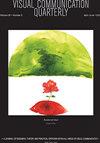Images from the Battlefields: How Al-Jazeera and BBC News Sites Visually Framed the Libyan Revolution
IF 0.4
Q4 COMMUNICATION
引用次数: 0
Abstract
The present research examines how the 2011 Libyan Revolution was visually framed on Al-Jazeera English and BBC news sites. Using images embedded in the news links of the two sites, the study investigates the prevalence of five visual frames: people, weaponry type, weaponry ownership, destruction, and “other.” The visual content analysis of 250 photographs shows that the people visual frame was the most prevalent and dominated by images of rebel fighters and civilians. Although guns dominated the weaponry frame, casualty and destruction images were rare. Three aspects of the visual frame coverage of the conflict come out strongly: the coverage of the conflict encapsulates support for the military intervention; the conflict was visually presented as a “Libyan affair”; and “bloodless.”来自战场的图像:半岛电视台和英国广播公司新闻网站如何在视觉上塑造利比亚革命
本研究考察了2011年利比亚革命是如何在半岛电视台英语频道和BBC新闻网站上被视觉化的。该研究利用嵌入在这两个网站新闻链接中的图片,调查了五种视觉框架的流行程度:人、武器类型、武器所有权、破坏和“其他”。对250张照片的视觉内容分析表明,人们的视觉框架是最普遍的,主要是叛军战士和平民的图像。虽然枪支占据了武器框架,但伤亡和破坏的图像很少。冲突的视觉框架报道在三个方面表现强烈:冲突的报道概括了对军事干预的支持;这场冲突在视觉上被呈现为“利比亚事务”;和“不流血的。”
本文章由计算机程序翻译,如有差异,请以英文原文为准。
求助全文
约1分钟内获得全文
求助全文

 求助内容:
求助内容: 应助结果提醒方式:
应助结果提醒方式:


